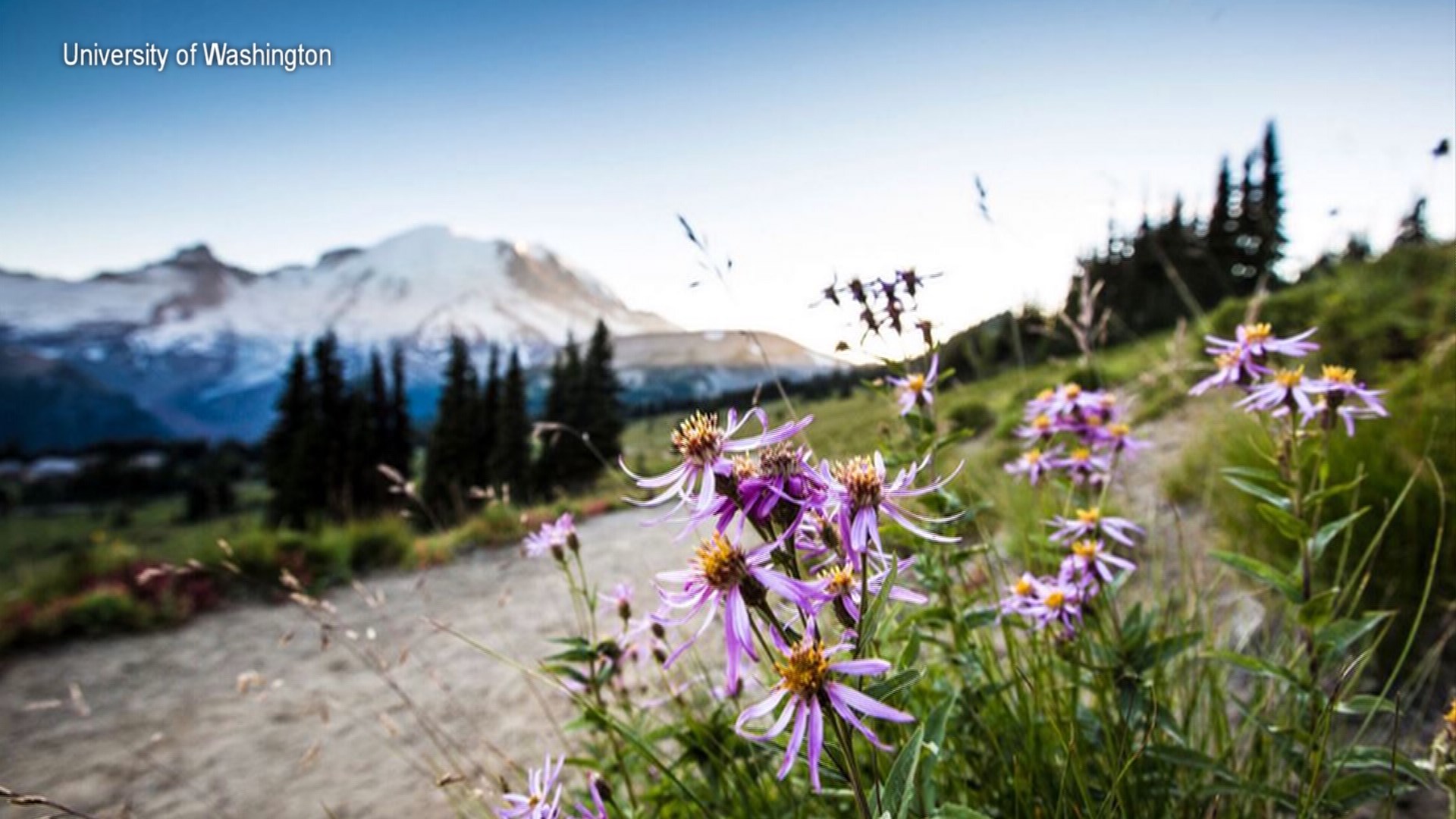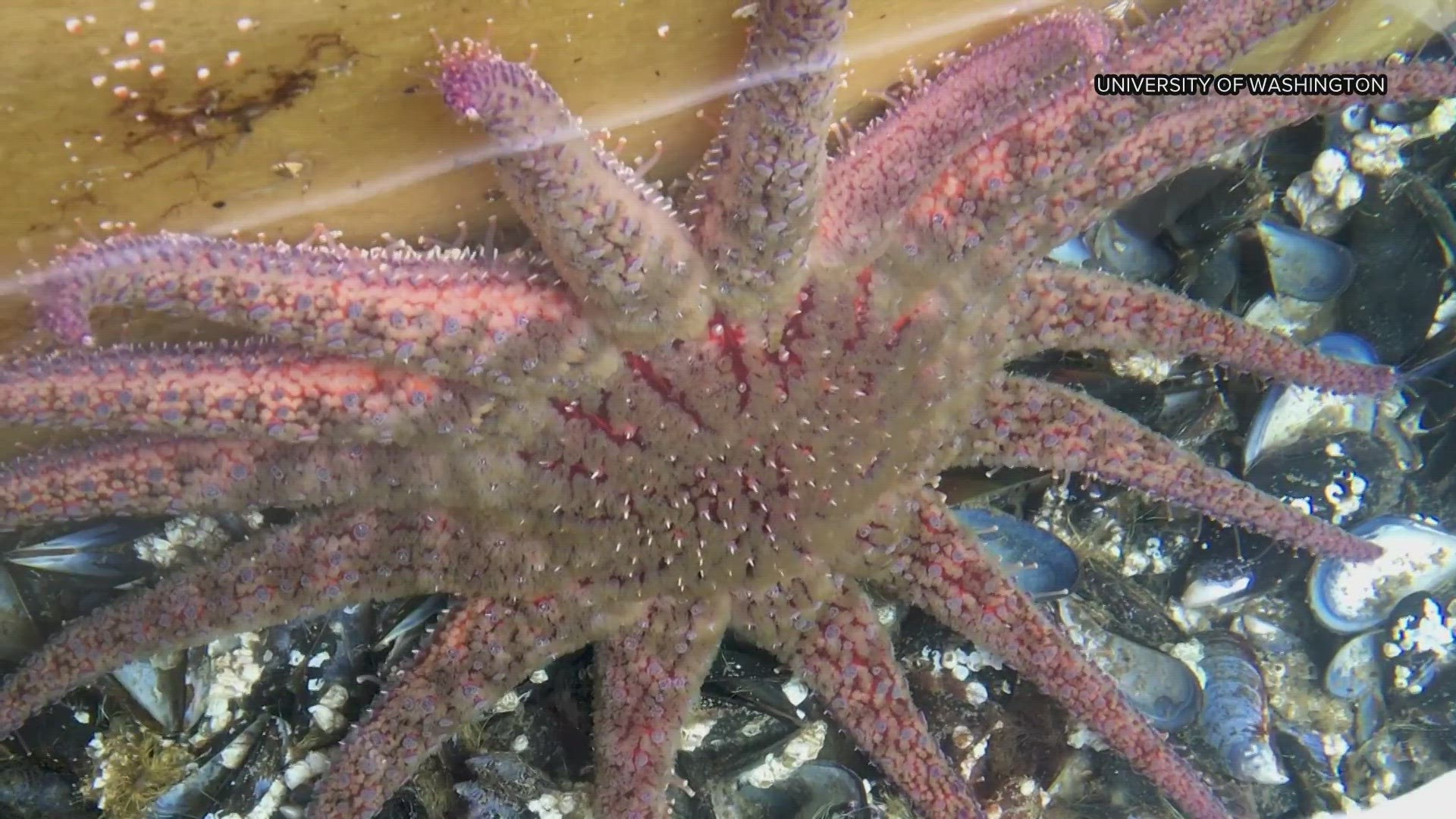Wildflowers at Mount Rainier National Park may start blooming a lot earlier in the year, a new study on climate change reports.
Researchers at the University of Washington found that earlier blooms are just one of several ways climate change may affect the park's popular flowers.
The avalanche lily is one of the first flowers that hikers see at Mount Rainier. It produces its own heat to melt snow and bloom faster. It also attracts a lot of hungry wildlife.
"It has a ton of nectar in it so it's a really important forage for bees. Over winter, it's the first plant that comes out so the bees will often go to it first," said UW biologist Elli Theobald.
Theobald and her colleague, Janneke Hille Ris Lambers, spent six years counting wildflowers at Mount Rainier. They also measured snow melt, temperature, and soil moisture. Lucky for them, the research spanned historic years for Washington weather and they found that some wildflowers are extremely sensitive to the time snow melts each year.
"We have the latest snow melt on record and the earliest snow melt on record. It just so happens that in 2015, when it was the earliest on record, those conditions mimic what we expect in the 2080s," Theobald said.
Wildflower season came a lot earlier, but the flowers didn't shift together. Some had more extreme reactions, and because flowers live in community with each other, no one's exactly sure how the change in relationship dynamics will affect survival of flower species.
"It means there's a whole potential for these different interactions to set up that we don't know much about," Hille Ris Lambers said.
When snow melts earlier in the year, flowers can bloom while temperatures are still cool. That means frost is more likely to kill them. The shifts in flower species could then have long term affects on pollenators like bees and on wildlife that feeds on berries.
It may also affect human activity, such as when and how they visit the popular park.
"Probably the most dramatic change from the perspective of visitors wanting to see wildflowers is that the peak wildflower season will happen a lot earlier. So, it was up to six to eight weeks earlier in 2015 than it was in other years," Hille Ris Lambers said.
Climate change will affect flower species differently. Some will benefit while others die off. So, what is the fate of the avalanche lily? Only time will tell.


